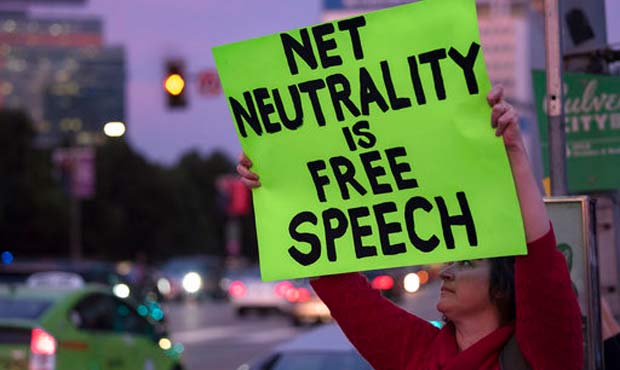We’ve all lived with the Internet for so long that it’s hard to imagine it not being a free and open medium. But the reality of that freedom being taken away from us became all too real as we watched hundreds of protests across the country took place on December 7, 2017, as they tried to defend the Internet and collectively demonstrated against the Federal Communications Commission(FCC)’s November announcement of plans to dismantle net neutrality regulations.

|Photo by Michael Bocchieri/Getty Images
What Is Net Neutrality?
Net neutrality rules, standing on the foundation that all Internet traffic should be treated equally, have required broadband providers to give consumers equal access to all content on the Internet. Millions of activists put pressure on the FCC back in 2015 to adopt the net neutrality rules to keep the Internet free and open. And the rules created during the Obama administration would prohibit broadband providers from intentionally blocking, slowing down services, or charging more for delivering specific Internet content.
For those unaware why net neutrality rules were developed and enforced in the first place, let’s relive how Comcast was secretly slowing down uploads from peer-to-peer file sharing applications by using forged packets. And then, of course, there was AT&T who was caught for limiting access to the FaceTime application to their users who had paid for their new shared data plans.
However, in May 2017, the FCC voted to allow Trump’s FCC chairman Ajit Pai’s plan to kill net neutrality move forward with Mr. Pai saying in the statement, “Under my proposal, the federal government will stop micromanaging the internet. Instead, the F.C.C. would simply require internet service providers to be transparent about their practices so that consumers can buy the service plan that’s best for them.”
“It’s depressed investment in building and expanding broadband networks and deterred innovation,” Mr. Pai said. He goes on to defend how the current rules have, in fact, limited consumer choice because telecom companies are unable to experiment with new business models that allow them to compete with online giants such as Google, Facebook, and Netflix.

Throttle Access, Stall Opportunity, And Censor Content
Nonetheless, the FCC was flooded with comments as consumers challenged the decision. With all this talk of business models, competition, and experimentation, consumers have translated the change to mean that killing the rules means that customers will end up paying the price as businesses pass down the buck when they need to pay more to compete in the Internet fast lanes. After all, without the rules, ISP (Internet service provider)s can throttle access to some websites for as long as they disclose their actions. Fast lanes will be reserved for businesses who can afford it, while the already-struggling small company, mom-and-pop shop, or startup will get left behind in the slow lane.
Former FCC Commissioner Michael Copps had this to say: “There can be no truly open internet without net neutrality. To believe otherwise is to be captive to special interest power brokers or to an old and discredited ideology that thinks monopoly and not government oversight best serves the nation.”
Despite FCC receiving 20 million public comments opposing the changing of the rules and protests taking place across the nation, on December 14th, FCC chairman Ajit Pai led a successful vote and effectively wiped out net neutrality rules. And already there’s a flurry of lawsuits and legal frameworks being prepared by pro-neutrality groups and defenders of net neutrality who want to fight back.
AT&T and Comcast alike have promised the public that the online experiences would not change. Some state legislatures are also planning their own net neutrality rules, but of course, these legal status is never certain.

Now that net neutrality is gone, what will happen next?
Experts predict that with the FCC’s repeal on net neutrality, telecoms who are now free to decide will start to block or slow down content. They can discriminate against who receives quality service. And with this, we’ll see small businesses and startups struggle to compete against paid prioritization.
However, let’s not fail to recognize that this is, in fact, the 6th time in the past decade that the U.S. rules on “network neutrality” have flipped. And the most we can do as consumers for now is hold our breaths and see how ISPs react to their regained freedom.







